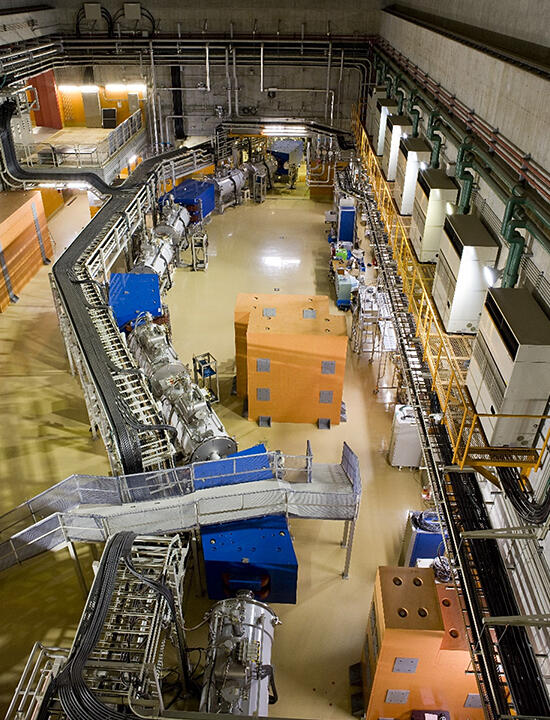An international research group led by Dr. Toshiyuki Kubo, at the Research and Instruments Group of the RIKEN Nishina Center for Accelerator-Based Science; D.S. Ahn, a collaborating researcher (at the time of the research); Dr. Hiroshi Suzuki; and Dr. Takashi Nakamura, at the School of Science at Tokyo Institute of Technology, has succeeded in producing and observing for the first time in the world the neutron-rich isotope sodium-39 (39Na: 11 protons, 28 neutrons, mass number 39), which has 16 more neutrons than the stable sodium-23 (23Na: 11 protons, 12 neutrons, mass number 23). With this discovery, they have for the first time determined that the nuclei of 39Na are bound and exist.

Provided by RIKEN
The question of how many neutrons an element can bind is a fundamental problem in nuclear physics and has attracted a lot of attention, but experiments have been difficult because the production ratio of the relevant isotope is extremely small. In their research, the group took on the challenge of producing and discovering of the neutron-rich isotope sodium-39 (39Na), with the outstanding production capability of the RIKEN Radioactive Isotope Beam Factory (RIBF).
First, they accelerated a high-intensity calcium-48 (48Ca: 20 protons, mass number 48) beam supplied by the accelerator at RIBF to about 70% of the speed of light and irradiated a 20 mm thick beryllium (Be) target to produce, by an incident spallation reaction, neutron-rich radioactive isotope beams (RI beams) containing 39Na.
Then, using the Superconducting Radioactive Isotope Beam Separator BigRIPS, the generated RI beams were collected and separated, where the researchers identified particles of the observed radioisotopes.
In the experiment, they confirmed that the use of the high intensity 48Ca beam and the high RI beam acquisition and identification capability of BigRIPS achieved sufficient production efficiency to produce isotopes near the nuclear drip line, such as 39Na, which is far from the stability line.
"Future developments will include experimental exploration of the nuclear structure of the discovered 39Na, searching whether sodium isotopes with more neutrons are bound, and searching for the neutron binding limit of magnesium, which has one more proton," explained Kubo. "Exploring the nuclear structure is particularly interesting because it allows us to directly investigate the nuclear structure responsible for binding 39Na, such as the disappearance of the magic number and the associated nuclear deformation."
■ Nuclear drip line: when neutrons are added to an element with the same number of protons, the binding energy decreases, and the element eventually becomes unbound and cannot exist as an atomic nucleus. This existence limit is called the nuclear drip line, which corresponds to the radioisotope (nucleus) with the highest number of neutrons in the same element.
This article has been translated by JST with permission from The Science News Ltd. (https://sci-news.co.jp/). Unauthorized reproduction of the article and photographs is prohibited.




